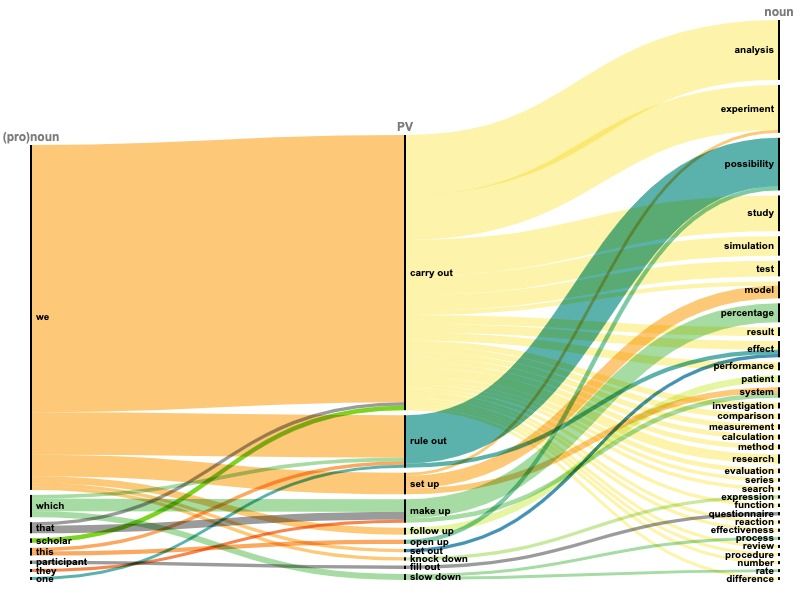Avoiding phrasal verbs in academic writing is a mistake. But it’s best to know how to use them, in particular which words they combine with. In this analysis, we look at the most commonly used noun-phrasal verb-noun combinations in scientific texts.
Our analysis
From a dataset of 300 million sentences from published papers, we extracted all three-word combinations following a ‘noun/pronoun + phrasal verb + noun’ pattern (for example, 'author points out limits').
We then lemmatized these, so that for instance the phrase 'author points out limits' would include singular/plural variations and non-adjacent combinations such as 'authors point out limits', 'author pointed out the limit', etc.
Just over 40 most frequent combinations were then selected, and visualized with an alluvial diagram (shown below). The broader the line, the higher the frequency count of the three-part combination in the dataset.

Our results
Most striking is the ubiquity of just one pronoun (‘we’) and one phrasal verb (‘carry out’) among these top combinations. ‘Carry out’ is followed by a wide range of nouns, but primarily ‘analysis’, ‘experiment’, and ‘study’. Other commonly used combinations are ‘we rule out possibility', ‘we set up model’, and ‘which make up percentage (%)’.
All those combinations fulfill important semantic functions in a research paper, such as:
1) describing a goal or protocol: ‘we carry out’ + any noun, ‘we set up model’, ‘we follow up patient’, ‘participant fill out questionnaire’, etc
2) observing and reporting numerical data: ‘which make up percentage’, ‘which slow down rate’, etc
3) interpreting results and drawing conclusions: ‘we rule out possibility/effect, ‘this open up possibility’, etc
When writing your next paper, see how many phrasal verb combinations you could use from the above diagram; we bet quite a lot.
Join our webinars
Looking for more academic writing tips? Join our free webinars, hosted by Writefull's linguists, or visit our Academic Writing Lab!

